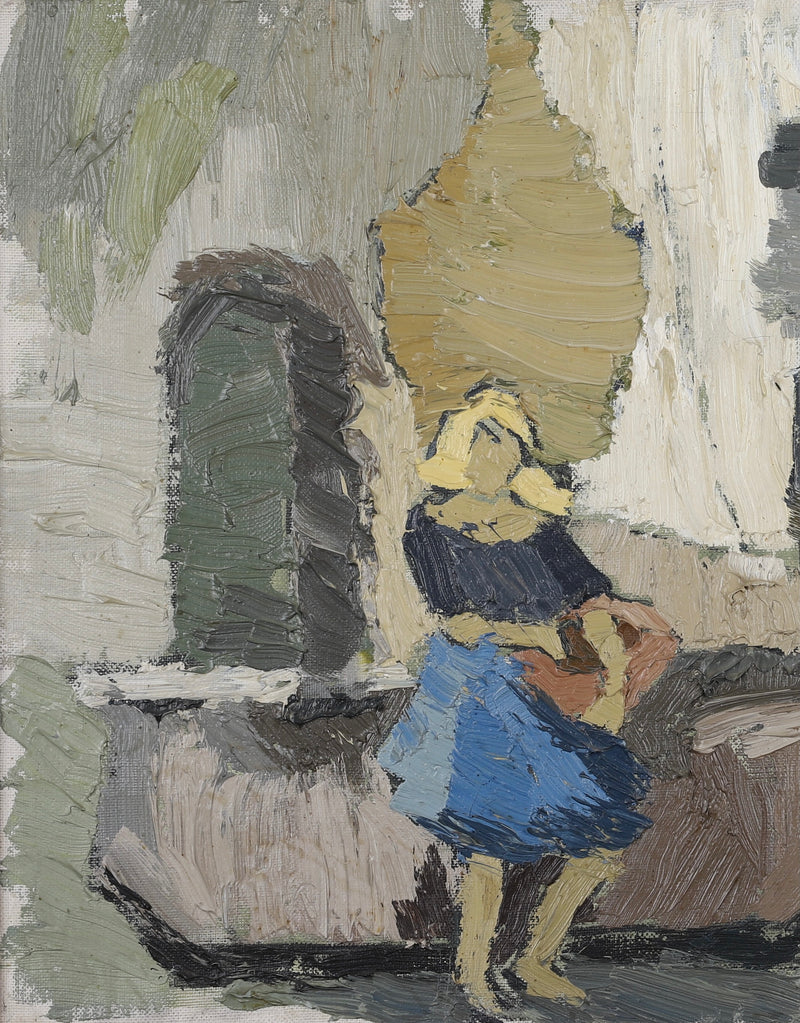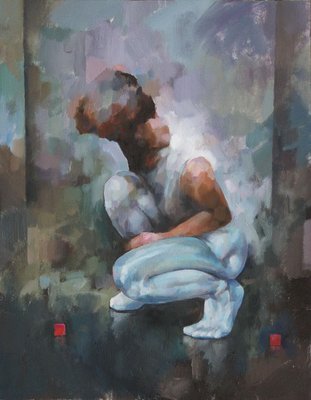Exploring Iconic Artists and Their Influences on Figurative Oil Painting
Exploring Iconic Artists and Their Influences on Figurative Oil Painting
Blog Article
The Role of Emotion and Expression in Metaphorical Oil Paint: An Extensive Evaluation of Topic and Structure
The interaction of emotion and expression in metaphorical oil paint offers as a critical lens whereby one can examine the intricate partnership in between subject and composition. Artists harness various strategies, from color choice to brushstroke dynamics, to grow emotional resonance within their works. This nuanced orchestration not only forms customer understanding yet likewise welcomes a deeper inquiry right into exactly how these elements integrate to mirror the complexities of human experience. As we explore this rich surface, one need to think about just how specific instance studies illuminate the wider effects of these artistic selections.
Comprehending Feeling in Art
Emotion in art offers as a powerful conduit for expression, allowing musicians to convey complicated sensations through their work. In metaphorical oil paint, this psychological depth is frequently represented through the representation of the human figure, catching the subtleties of human experience. The option of subject matter, color palette, and brushwork all add to the emotional resonance of an item.
Artists regularly bring into play personal experiences, social concerns, or global themes to evoke feelings in the audience. For example, a picture may mirror vulnerability, while a dynamic number in activity can symbolize flexibility or chaos. These psychological strings link the visitor to the artwork, promoting a discussion that goes beyond the aesthetic tool.
In addition, the interaction in between light and shadow can magnify emotional intensity, assisting the viewer's gaze and drawing interest to specific aspects within the structure. Using appearance in oil painting even more includes layers of complexity, inviting a tactile action that boosts the psychological experience. In general, recognizing emotion in art is important for appreciating the nuances that define metaphorical oil paint, as it changes simple depiction into an extensive exploration of the human problem.
Crucial Element of Make-up
In the realm of metaphorical oil paint, the structure works as the underlying structure that organizes visual elements and enhances the emotional story. Essential elements of structure consist of equilibrium, comparison, prime focus, and rhythm, each adding to the total effect of the artwork.
Equilibrium describes the distribution of visual weight within the painting, which can be accomplished with balanced or asymmetrical setups. A healthy structure gives stability, permitting the customer to engage with the piece harmoniously - figurative oil painting. Contrast, on the various other hand, involves comparing various aspects, such as light and dark or warm and great shades, to direct the visitor's eye and evoke emotional reactions
The centerpiece is critical, as it directs interest to one of the most substantial component of the paint, frequently highlighting the psychological core of the story. With techniques like shade saturation or positioning, artists can highlight this area successfully. Rhythm pertains to the repeating of aspects, developing a sense of activity and flow throughout the make-up. By skillfully incorporating these crucial elements, artists can craft psychologically powerful and engaging figurative oil paintings that mesmerize and involve their target market.
Topic and Its Effect
Topic plays an essential function in figurative oil painting, as it not only functions as the foundation for the narrative but also shapes the customer's analysis and emotional involvement with the art work. The choice of subject-- be it a solitary number, a team dynamic, or a thematic representation-- directly influences the emotional atmosphere conveyed to the target market.

For circumstances, pictures commonly evoke personal links, revealing the details of human expression and character, while scenes depicting public activities can develop a sense of belonging or fond memories. Additionally, the historical and social context of the subject improves the customer's understanding, motivating much deeper representations on societal norms, values, and the human condition.
Various subjects also produce differing levels of interaction; a dramatic problem depicted with figures in stress might generate sensations of stress and anxiety or empathy, while calm landscapes can conjure up tranquility and contemplation. Eventually, the effect of subject in metaphorical oil paint is extensive, as it works as an avenue for emotional resonance, leading the visitor's action and interpretation, and cultivating a connection between the viewer and the art work. This interplay is essential for the successful my company interaction of the artist's intent.
Strategies for Evoking Feelings
The efficiency of metaphorical oil paint in communicating feelings is substantially affected by the strategies employed by the artist. One of one of the most crucial methods is the use of shade concept, where the tactical choice of tones can evoke certain emotional reactions. Warm colors, such as reds and oranges, usually generate feelings of enthusiasm or hostility, while cooler tones like blues and greens have a tendency to stimulate peace or sadness.
An additional vital strategy is the control of light and darkness, referred to as chiaroscuro. This method improves the three-dimensionality of figures, developing dramatic contrasts that can heighten psychological depth. The placement of light can direct visitors' feelings, highlighting specific components of the structure.
Brushwork also plays a crucial function; loose, meaningful strokes can convey energy and spontaneity, whereas smoother techniques might suggest tranquility or precision. In addition, the plan of topics within the make-up can influence psychological influence. Close proximity can suggest affection, while range might indicate isolation.
Inevitably, the mix of these methods allows artists to craft narratives that resonate with the customer, changing a mere visual experience right into an expressive psychological journey. - figurative oil painting

Study of Noteworthy Works
Examining notable jobs of metaphorical oil painting reveals how various methods are utilized to stimulate powerful feelings. One exemplary situation is Edvard Munch's "The Scream," where the altered number and swirling history click for more info share existential dread. Munch's use shade-- deep blues and vibrant oranges-- escalates the psychological effect, showcasing just how scheme options can shape viewer experience.
One more substantial work is Pablo Picasso's "Les Demoiselles d'Avignon." Below, bold brushstrokes and fragmented forms mirror a troubled psychological landscape, testing standard representations of the female figure. Picasso's cutting-edge composition not just captures the audience's interest but likewise welcomes contemplation on styles of identification and sexuality.
Furthermore, Frida Kahlo's "Both Fridas" uses an emotional exploration of duality and self-identity. The different numbers, linked by a shared heart, exhibit Kahlo's emotional depth and personal story. figurative oil painting. Her thorough attention to information and symbolic elements serve to engage viewers on a natural degree
These instance researches underscore weblink the profound connection between feeling and composition in metaphorical oil paint, disclosing just how artists harness method to interact complex feelings and narratives that resonate throughout time and society.

Conclusion
To conclude, the interplay of emotion and expression in figurative oil paint substantially enhances the visitor's experience and interpretation of the art work. Through a careful option of subject issue and compositional techniques, musicians convey profound stories that reverberate on both universal and personal degrees. The application of color brushwork, chiaroscuro, and concept additional intensifies emotional deepness, changing each canvas into an effective representation of the complexities of the human experience.
In metaphorical oil paint, this emotional deepness is frequently depicted through the representation of the human figure, recording the nuances of human experience.Moreover, the interplay between light and darkness can enhance emotional strength, assisting the audience's look and drawing focus to specific components within the make-up. The use of structure in oil painting additionally includes layers of complexity, welcoming a responsive feedback that improves the emotional experience.The focal point is important, as it directs focus to the most significant part of the paint, typically highlighting the psychological core of the narrative. Eventually, the impact of subject issue in metaphorical oil painting is profound, as it offers as a conduit for emotional vibration, leading the customer's response and interpretation, and fostering a connection between the artwork and the onlooker.
Report this page